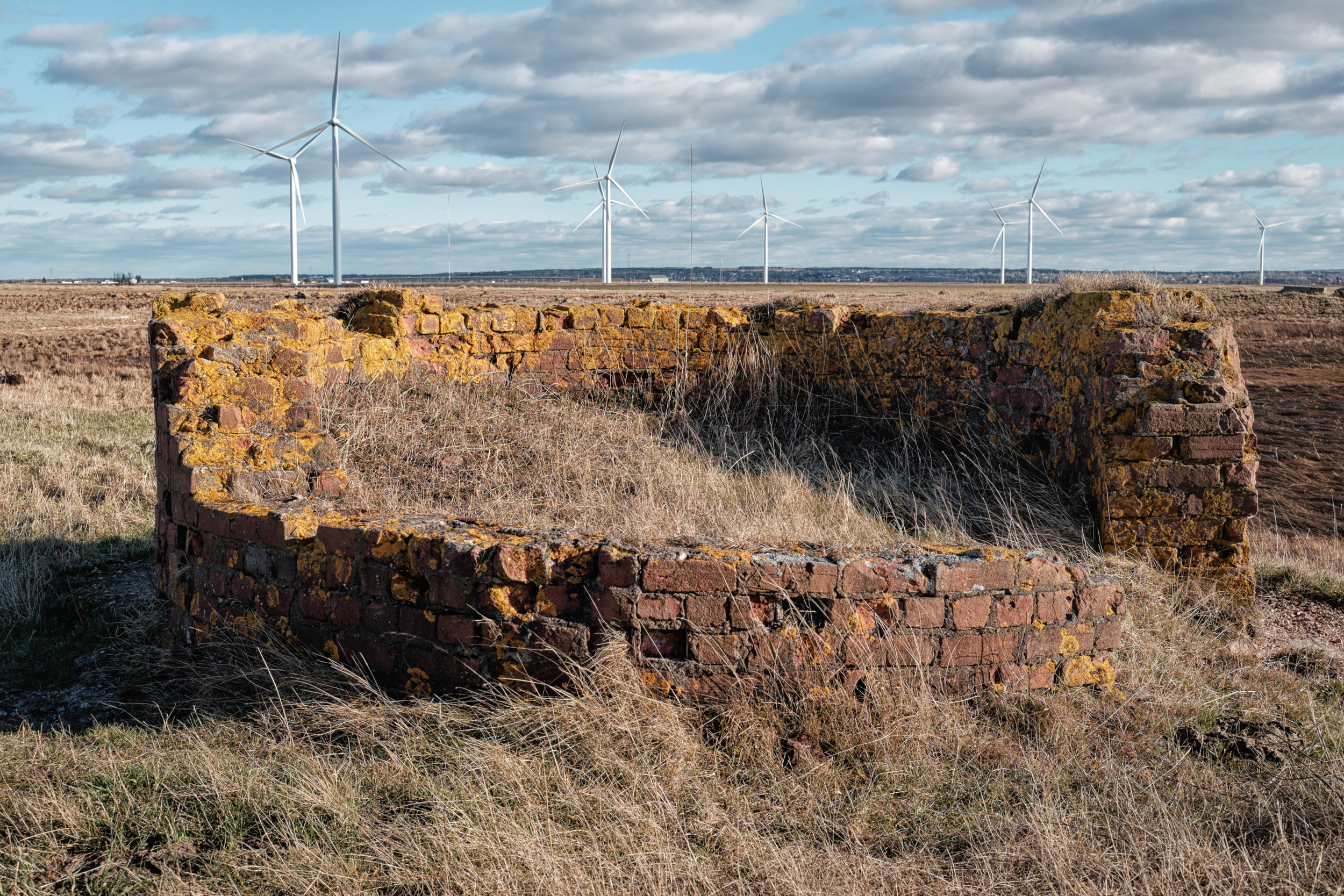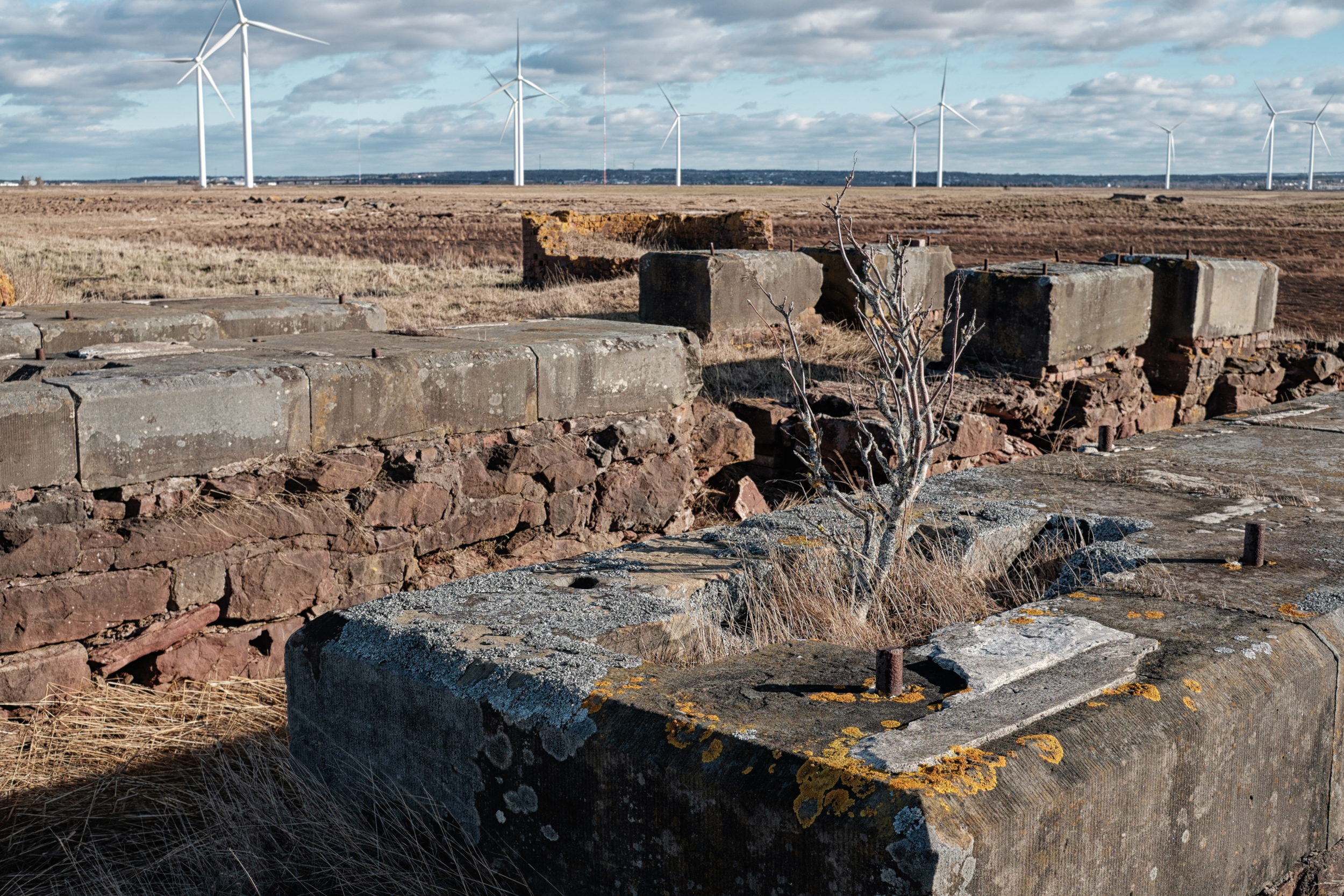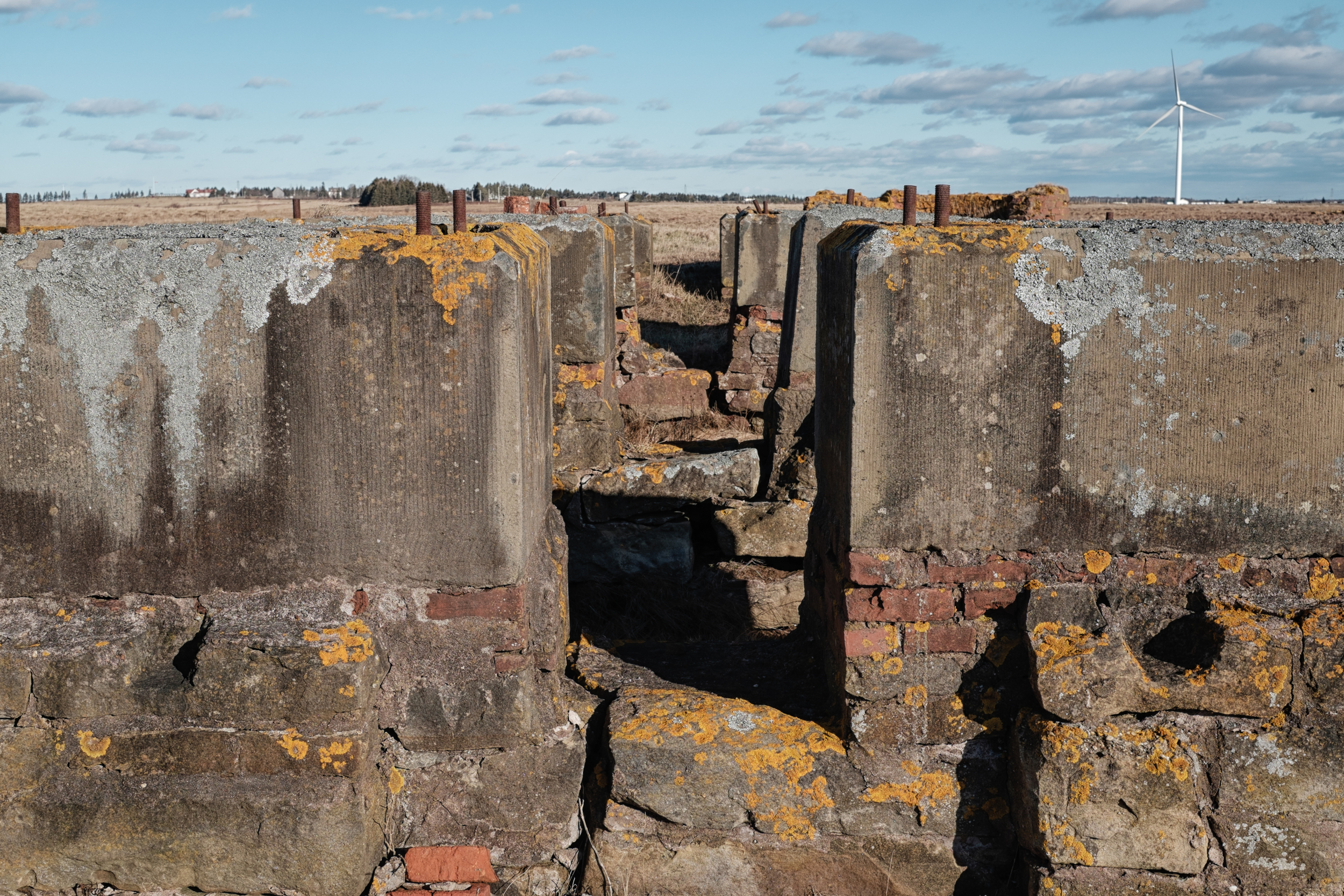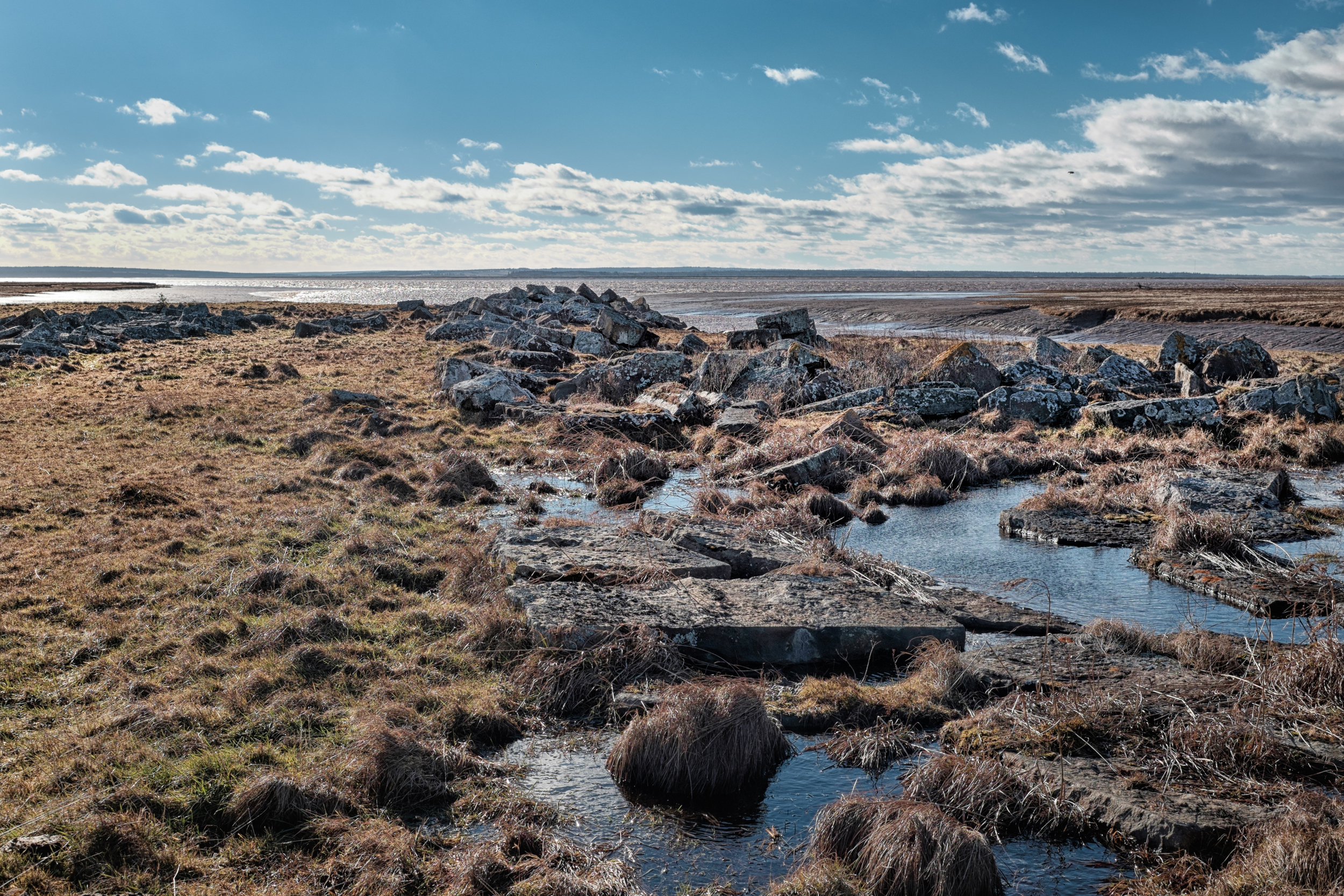Fort Lawrence, Nova Scotia
I finally got a chance to try and find this place. I briefly learned about this in school way back in the day and last year I started looking back into what this place was all about. In the 1890's a massive infrastructure project was started that would transport ships across the Isthmus of Chignecto. This railway would span from where the Missaguash River empties into the Cumberland Basin all the way to Tidnish on the Northumberland Straight thereby allowing shipping traffic from the Bay of Fundy to easily access the Gulf of St. Lawrence. Here is a quote from the lead engineer Henry Ketchum that describes how things would go down:
“... the traveller will have the novel experience of watching from his vessel’s decks a lovely landscape of meadows and orchards unroll below him as he moves slowly across the isthmus. The sensation will be unique as this is the world’s only ship railway.”
These days, the landscape is much different. There is a giant wind farm near the site of the old Ship Railway but the remains of the massive construction project still exist in the area. It just took some walking - in the windy, soggy, cow pastures - to get there.
Chignecto Ship Railway on the map. The photos in this post (both old and new) were taken at the western end of the line.
photos of this very site from back in the 1890s
There are many more of the Amherst and Tidnish construction sites int he UNB Archives here.
And here is the site today... 125 years later.
Below are some photos of what I believe was the old pumping building - I really have no idea what the original use was for this area but will be going back sometime when the weather is warmer to do some more exploring. In Amherst, Bill Casey has recently called on all levels of government and surrounding communities to develop this and other historically significant sites in the area as tourist attractions. Mr Casey's family held this long strip of land for decades until the Province of Nova Scotia purchased it in February of 2012.

















